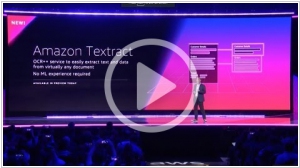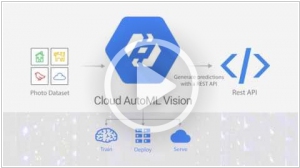AI OCR (text recognition) services
Updated: July 31, 2023
AI OCR (Artificial Intelligence Optical Character Recognition) software is a sophisticated technology that combines AI and OCR to convert images of text into editable and searchable digital formats. This software utilizes machine learning algorithms to recognize and extract text from scanned documents, images, or even handwritten text, enabling efficient data entry and document digitization. AI OCR software can process large volumes of documents quickly and accurately, significantly reducing manual data entry efforts and improving productivity. With advanced image preprocessing and natural language processing capabilities, AI OCR can handle complex layouts, different fonts, and various languages, ensuring accurate text extraction. This technology has diverse applications in industries like finance, healthcare, and legal, where digitizing and processing large volumes of documents are critical for efficient and streamlined operations. AI OCR software continues to evolve and revolutionize document management, making it an indispensable tool for businesses seeking to enhance data accuracy and automate document processing workflows.
See also: Top 10 Office suites
See also: Top 10 Office suites
2021. Ocrolus lands $80M to automate document processing for fintechs and banks
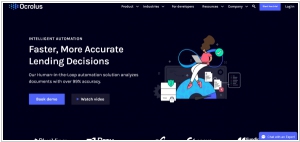
Ocrolus, a promising startup aiming to streamline the loan approval process through automated analysis of financial documents with an impressive accuracy rate of over 99%, has successfully raised $80 million in Series C funding. Ocrolus employs a combination of advanced technologies including OCR (optical character recognition), machine learning, AI, and big data analytics to comprehensively analyze financial documents. What truly sets Ocrolus apart is its incorporation of the Human-in-the-Loop (HITL) component in document processing, which further enhances the accuracy of the analysis. In essence, the company strives to assist lenders in making faster and data-driven decisions. Ocrolus' cutting-edge technology enables the classification of financial documents, extraction of key data fields, fraud detection, and cash flow analysis. With its innovative approach, Ocrolus is revolutionizing the loan approval process by providing robust and accurate insights to lenders.
2019. Rossum raises $4.5M for AI-based OCR
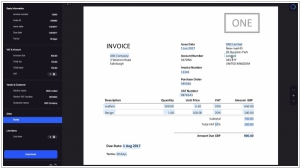
Rossum, a company utilizing 'Cognitive Data Capture' to enable computers to comprehend documents as humans do, has recently raised $4.5 million in funding. The company's AI tool has demonstrated the ability to extract data at a rate six times faster than humans, resulting in cost savings of up to 80% for businesses. Rather than replacing employees, Rossum's objective is to accelerate human operators' productivity, providing companies with greater flexibility and reliability for their customers. This technology allows employees to redirect their focus towards more intricate tasks or those that demand creativity.
2019. Amazon launched AI OCR service - Textract
Amazon has introduced a new service called Textract for its Web Services customers, and it can be described as optical character recognition on a highly advanced level. Textract goes beyond mere text extraction from documents, as its name suggests. It possesses the ability to identify various document formats and their contents, allowing for accurate processing. This product has been specifically designed to recognize and extract text from tables and forms found within documents, including scanned receipts, tax paperwork, and inventories. It then generates structured data without requiring human intervention. Textract is capable of processing millions of pages within a matter of hours, thereby reducing document processing costs. What's more, customers can utilize Textract even without prior experience in machine learning.
2019. Microsoft launched cloud APIs for form and handwriting recognition
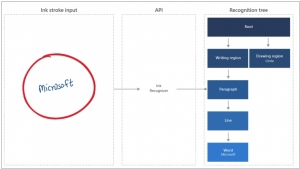
Microsoft has unveiled a range of new cognitive services on its Azure Machine Learning cloud platform, catering to various document-related needs and offering enhanced capabilities. Among these services are the Ink Recognizer and Form Recognizer, which enable the conversion of handwritten text and paper documents into digital text and data. Additionally, the Conversation Transcription service facilitates the transformation of phone dialogues into text, with the ability to identify the author of each phrase. Another notable addition is the Personalizer service, which delivers personalized recommendations to website and online store visitors based on their behavioral patterns. Furthermore, Microsoft has introduced a user-friendly visual interface for creating machine learning models, empowering marketers and other professionals to engage with machine learning. By simply uploading the database and specifying the desired predictive parameter, users can explore the potential of machine learning in their respective fields.
2019. Microsoft added table OCR to mobile Excel
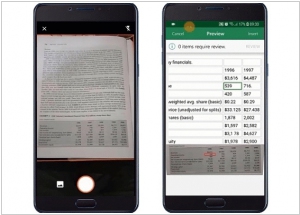
Microsoft has introduced a new functionality to the mobile Excel application, enabling users to capture an image of a printed table and convert it into an editable Excel spreadsheet. Currently, this feature is exclusively available for Android users, but it will soon be extended to iOS as well. It is important to note that this feature is limited to Office 365 users. However, it is primarily designed for simple tables, as more complex tables with merged cells may result in recognition errors.
2018. Google Compute Engine adds simple machine learning service
Google has introduced AutoML, a groundbreaking service available on Google Compute Engine that empowers developers, even those without prior machine learning (ML) expertise, to construct personalized models for image recognition. The scarcity of machine learning experts and data scientists in today's market is widely acknowledged. To address this challenge, Google's new service enables virtually anyone to submit their images, upload them (and import or create tags within the application), and automatically generate a custom machine learning model using Google's advanced systems. The entire process, from data importation to tagging and model training, is facilitated through a user-friendly drag and drop interface. It's important to note that this service goes beyond the capabilities of Microsoft's Azure ML studio, which offers a Yahoo Pipes-like interface for model building, training, and evaluation.
2017. Box applied AI to content management
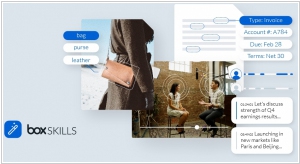
Box has recently introduced Skills and its accompanying SDK, known as Skills Kit. These new offerings empower organizations and developers to extract valuable insights from their extensive content repositories within Box datasets, utilizing machine learning techniques to unlock the inherent commercial value of their content. Box is currently showcasing three initial Box Skills, leveraging machine learning tools from Google Cloud and Microsoft Azure to address common business use cases. These include image recognition, which involves detecting objects and concepts within image files, performing optical character recognition (OCR) to extract text, and automatically assigning keyword labels to images for efficient metadata creation. Additionally, Box Skills encompass audio transcription and analysis, enabling the creation and indexing of text transcripts from audio files for seamless search and manipulation across various use cases. Lastly, video indexing employs text transcription, topic detection and indexing, and facial recognition to analyze video files comprehensively.

